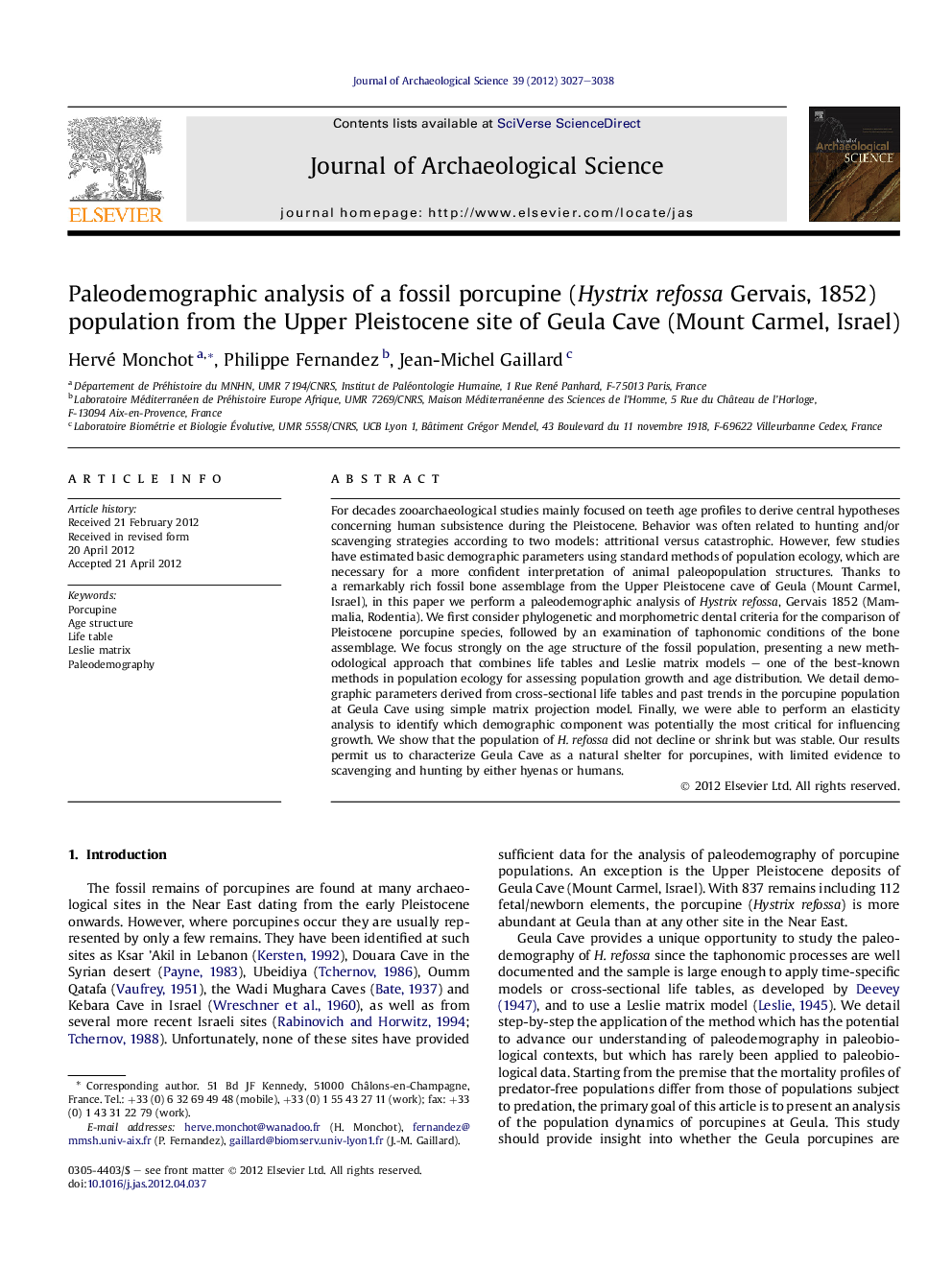| کد مقاله | کد نشریه | سال انتشار | مقاله انگلیسی | نسخه تمام متن |
|---|---|---|---|---|
| 1035804 | 943865 | 2012 | 12 صفحه PDF | دانلود رایگان |

For decades zooarchaeological studies mainly focused on teeth age profiles to derive central hypotheses concerning human subsistence during the Pleistocene. Behavior was often related to hunting and/or scavenging strategies according to two models: attritional versus catastrophic. However, few studies have estimated basic demographic parameters using standard methods of population ecology, which are necessary for a more confident interpretation of animal paleopopulation structures. Thanks to a remarkably rich fossil bone assemblage from the Upper Pleistocene cave of Geula (Mount Carmel, Israel), in this paper we perform a paleodemographic analysis of Hystrix refossa, Gervais 1852 (Mammalia, Rodentia). We first consider phylogenetic and morphometric dental criteria for the comparison of Pleistocene porcupine species, followed by an examination of taphonomic conditions of the bone assemblage. We focus strongly on the age structure of the fossil population, presenting a new methodological approach that combines life tables and Leslie matrix models – one of the best-known methods in population ecology for assessing population growth and age distribution. We detail demographic parameters derived from cross-sectional life tables and past trends in the porcupine population at Geula Cave using simple matrix projection model. Finally, we were able to perform an elasticity analysis to identify which demographic component was potentially the most critical for influencing growth. We show that the population of H. refossa did not decline or shrink but was stable. Our results permit us to characterize Geula Cave as a natural shelter for porcupines, with limited evidence to scavenging and hunting by either hyenas or humans.
► We model a paleodemographic analysis of porcupine (Hystrix refossa).
► This approach combines life tables and Leslie matrix models.
► We show that the population of porcupine did not decline or shrink but was stable.
► Geula Cave was therefore a shelter for different cohorts of porcupines.
► There is limited scavenging or hunting by hyenas or man on this population.
Journal: Journal of Archaeological Science - Volume 39, Issue 9, September 2012, Pages 3027–3038